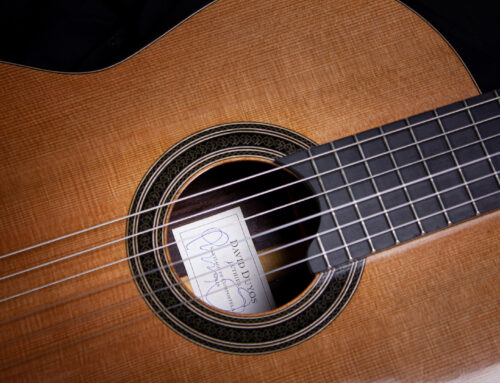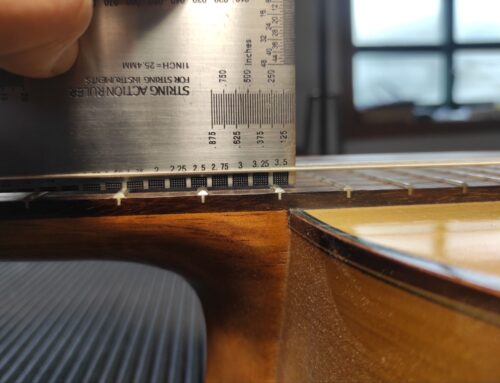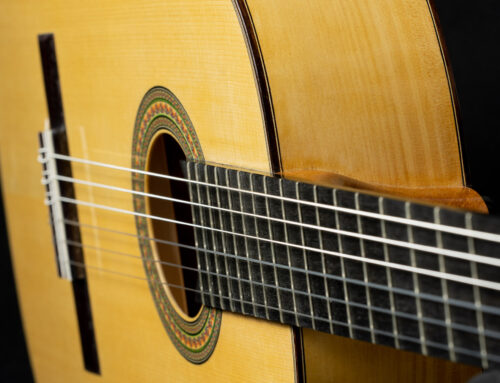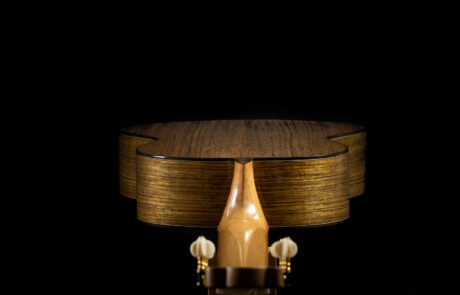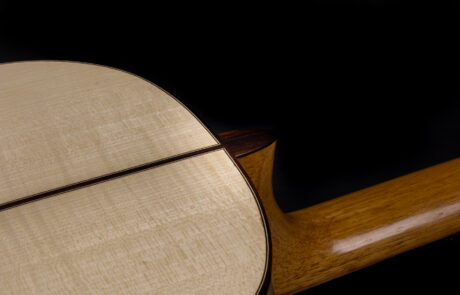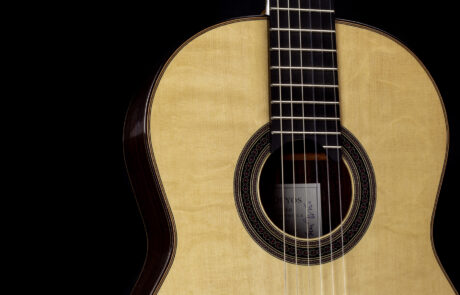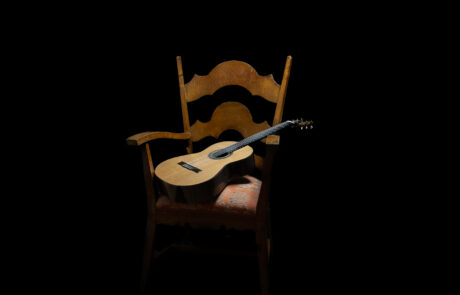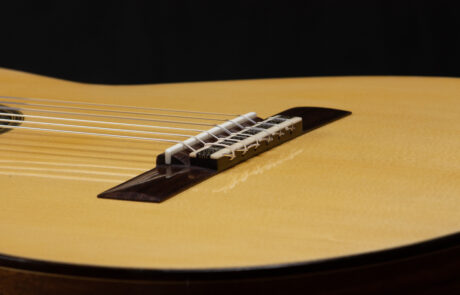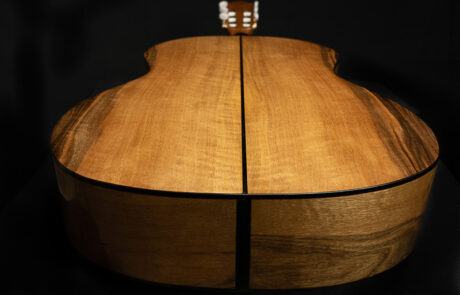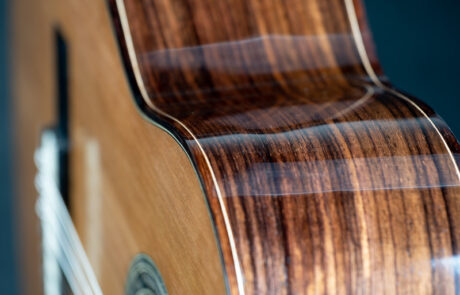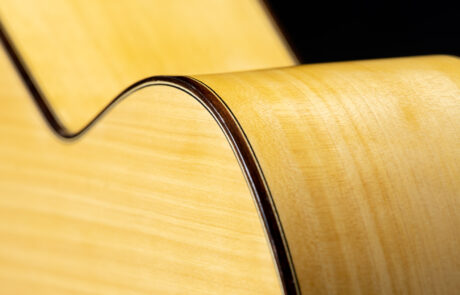Contents on this post
We begin here a series of articles with simple recommendations for traveling with your classical guitar. Today we will focus on the case of traveling by car. It is evident that the time in which we live is a time in which travel is much more frequent and longer. Keeping a few things in mind can help you to keep your instrument away from the dangers of traveling back and forth.
The right case
Inside the car, it is possible that the guitar may move, and avoiding any scare due to a silly bump goes through transporting it in a proper case. So the first thing to think about is which case is best for car trips. Well, “short and to the point”: use a hard case. Or, at least a hard foam case, like this one. If you don’t want or don’t have one of these, at least use a case with the hardest possible padding. Unpadded cases will only protect your instrument from scratches and water, but not from shocks: best to avoid them.
Where to place the guitar in the car
The next question is where to place the guitar in the car. The ideal would be on top of the rest of the luggage, avoiding it to be trapped by other elements, especially if we do not have a hard case. Cases such as those manufactured by Hiscox can be useful to put the guitar where it is most convenient for you without the fear that it will suffer from bumps or crushing, but in any case, it is advisable to be careful. If you are traveling alone or with the rear seats free, a good option is to place the guitar on the floor, between the two rows of seats, but this is not always possible.
Beware of heat
Intense heat is a mortal enemy of guitars. Simplistically put, a guitar is a set of very thin woods assembled with glue. Both the wood and the glue are very sensitive to changes in temperature and humidity. To show you how sensitive both things are, I will tell you that to disassemble a guitar what is done is precisely to apply heat and humidity. Because with heat and humidity, the wood deforms and the glue loses its adhesive properties.
And, when traveling by car, this is a risk that must be taken into account, especially in the hot months. The interior of a car in the sun can exceed 70 degrees Celsius and more than 80 percent humidity in a very short time. As you can see, it is a very simple way to disassemble your guitar. I’ve had instruments come into my shop with the bridge peeling off, incredible cracks and warping, varnish gone bad, and some pretty horrible breakdowns caused by leaving the guitar in the car on a hot day.
So the advice is simple. Don’t leave your guitar inside the car in the hot months. If you have to stop to rest or refuel for more than 5 minutes, take your guitar with you. If the heat is intense, avoid leaving it in the sun as well, even outside the car. The advice is not to force your guitar to expose it to “non-human” environmental conditions.
Keep the guitar at a constant humidity level.
If excessive heat is an enemy of our instruments, sudden changes in humidity are no joke either. They can cause cracks or deformations in our guitars. And traveling often means very rapid changes in the ambient humidity level. Air conditioners are no help either, as they tend to dry out the environment excessively. And then, of course, the climate of the places we pass through during a trip can be very different. So you should keep your instrument at a humidity level as constant as possible.
A well-built guitar can withstand almost any humidity level, but it is necessary that this change does not occur suddenly, especially when we go from a humid environment to a dry one, which is where cracks could occur. This is because wood, when moving to a drier environment, loses humidity and “shrinks”. This phenomenon is what causes the typical cracks in the lid, which sometimes are not easy to repair.
So a good solution is to install inside the case something that keeps the humidity constant inside. The best I have tried is the D’Addario Humidipack system (here is a link to Amazon), which ensures that the guitar is kept at humidity levels of around 45-55%, whether you travel to a humid place or a drier one.
Another related tip is not to take your guitar out of the case in an abrupt manner. It may sound a bit exaggerated, but if your guitar is of a certain value, taking this measure can prevent you from costly breakdowns. So, when you arrive at your destination and you want to take the guitar out, leave it in the closed case for a while first. A long time, I would say about an hour. It will give time for the temperature inside the case to harmonize with the outside. Afterwards, open the guitar case a little: in rigid cases, loosen the latches and leave a small gap through which the air can seep in. Leave it for another little while. Another hour, for example. This will allow the internal and external humidity levels to balance. Once you have done this, you can take the guitar out of the case, with some certainty that nothing will happen to it. You will notice how humidity changes affect the sound —that’s always the case—, but at least the guitar will be safe from undesirable malfunctions.
Safety recommendations
A handcrafted guitar is something of great value. You don’t need me to prove it to you. It can be a very juicy item for a theft. So it is not a good idea to leave the instrument in the car, in full view of everyone, and it is a good idea to always keep it in sight at the stops you make along the trip.
Another risk when traveling by car is loss. So, to get out of silly forgetfulness, I recommend labeling the guitar with our name and phone number. It would not be the first time that a guitarist forgets his precious guitar in the restaurant of a gas station where he stopped to eat, and a simple label greatly facilitated the “reunion” between the guitarist and his instrument. At this Amazon link you have a lot of options to solve this issue.
Conclusion
As you can see, traveling by car with your guitar is possible, but you have to take into account some things to avoid scares and breakdowns. I hope these simple tips will take away your fear of traveling with your guitar over the world. If you have any doubt, don’t hesitate to write me, or leave your question in the comments.


